Aizu Wakamatsu is a city in the west of Fukushima prefecture in the northeastern Tohoku region of Japan. Fukushima has a reputation in Japan for its beautiful scenery, unique food, and boasts some of Japan’s best peaches and award-winning sake. Traveling by local train from Koriyama City, you’ll arrive at Aizu Wakamatsu after passing Mount Bandai and Lake Inawashiro. The city is renown for its samurai heritage and traditions, most notably for being one of the last strongholds of the samurai supporting the Shogun during the Meiji Restoration in 1868.
Even today the Samurai spirit can be found in the many historic city landmarks, and there is even the opportunity to participate in Samurai training! Aside from it’s fascinating history and deep links to the Samurai, Aizu Wakamatsu has something special to offer for everyone. For foodies, there’s local delicacies such as Wappa Meshi and Kitakata ramen, while creatives can try their hand at Akabeko painting experiences. Then you have the onsen hot springs and ryokan for relaxing and the stunning mountain and lake scenery in the nearby Urabandai area.

Located just over 3 hours away from the hustle and bustle of Tokyo, Aizu Wakamatsu is an ideal destination for those seeking a getaway to somewhere off the beaten path. Here, we’ll discuss some of the best things to do in Aizu Wakamatsu, including recommended local restaurants and accommodation options.
Nanuka Machi (also called Nanokamachi)
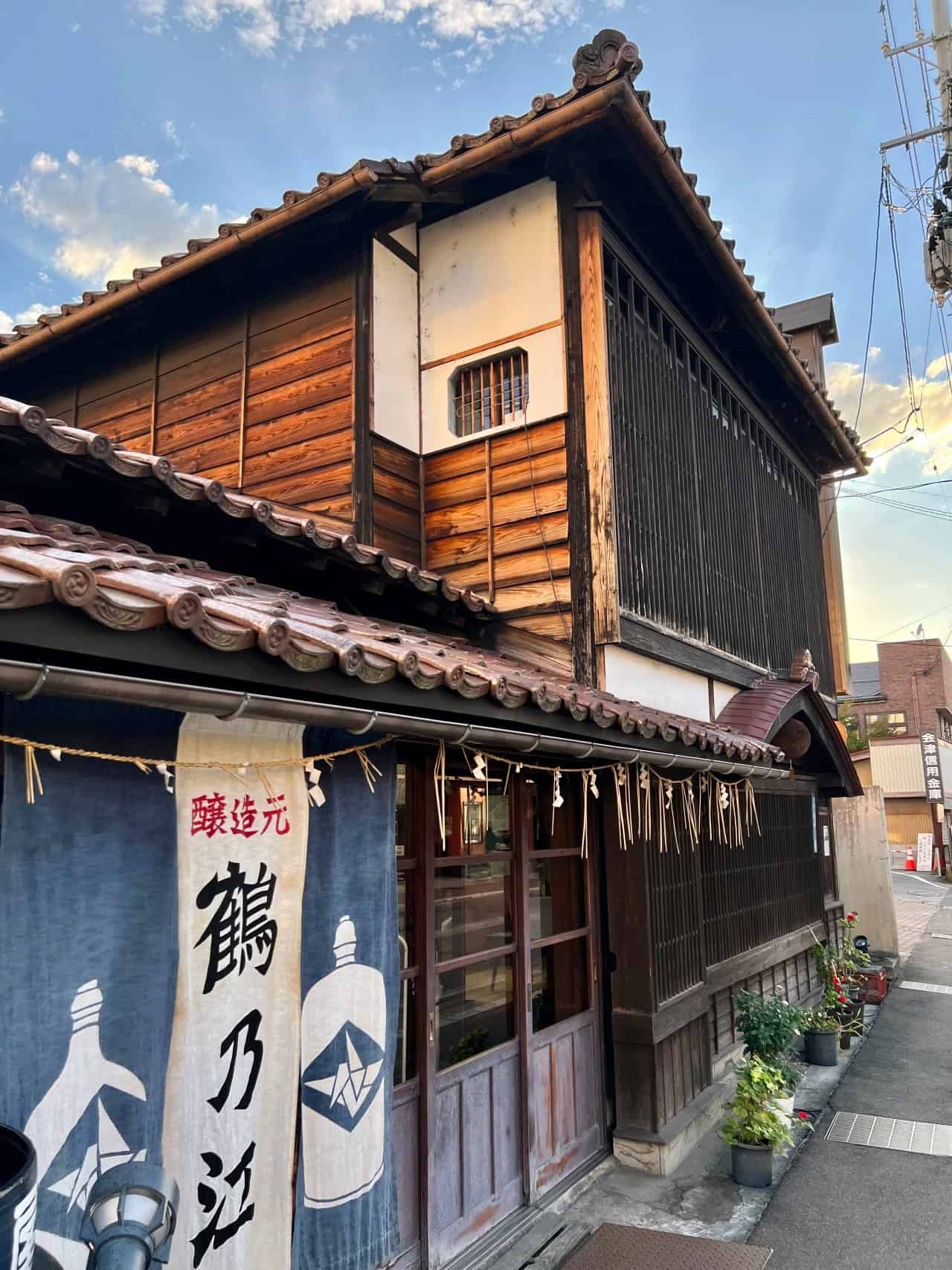
The historic street of Nanuka machi is a popular one that many people who travel to Aizu Wakamatsu take a journey down. In fact, you would be hard-pressed to find someone who has visited this city and not walked this iconic street called Nanukamachi-dori. You can enjoy a leisurely stroll along the charming 700-meter-long route with quaint and picturesque wooden buildings. There are also quite a few cafes and restaurants as well as shops with traditional storefronts selling handcrafts and souvenirs.

Visitors to Nanuka Machi often start their walk at Amida Temple located close to the train station. This is the resting place for many of the brave warriors of the Aizu clan who fought against government forces during the Boshin War of 1868. Amongst them rests Hajime Saito, a celebrated captain of the Shinsengumi – a group of elite swordsmen commissioned by the Tokugawa Shogunate before its fall. He was one of few who survived that great conflict. The three-story building in the centre of the photo above is called the Osankai (aka Gosankai), which was once part of the palace ground in Tsuruga Castle’s Honmaru. Following the civil war, it was moved and reconstructed here by the temple main hall in 1870.

As you explore Nanuka Machi, you’ll come across an array of traditional shops, tea houses, museums and artisanal boutiques, each offering a unique glimpse into the region’s rich cultural heritage. Be sure to take a peek inside for some truly special finds! One store we would highly recommend checking out is Nagatoya, a sweet shop founded 170 years ago when one of Aizuwakamatsu’s feudal lords ordered a small sweets maker to make affordable snacks for everyday people to enjoy.

For generations, Nagotoya has dazzled local taste buds with delicious treats. Recently they’ve developed even more unique confections, such as their Fly Me to The Moon cake which features a narrative element in every single slice you cut, and mesmerizing Japanese sugar muddlers that dissolve as you stir them into your drink.

Nanuka Machi demonstrates that history isn’t the only thing that Aizu is famous for, as local crafts, souvenirs, pottery, textiles, and other traditional Japanese goods are at your fingertips. Strolling around, you can even come across some absolute bargains such as these beautiful lacquered bowls made locally. The one on the right is discounted to under £2.50! Besides browsing the stores, you can also visit Sake breweries such as Tsurunoe pictured at the top of this section, where you can enjoy sake tasting and learn insights on sake production. The area also has plenty of dining options and you can try regional cuisine like Kitakata ramen and cafes with Japanese sweets.

Located a short way near the end of Nanuka Machi Street stands the Memorial House for Dr Hideyo Noguchi, a celebrated figure from Aizu Wakamatsu. His achievements in medical research includes discovering the cause of syphilis and making significant strides towards creating a vaccine against yellow fever. Unfortunately, he contracted that very same virus and passed away at the age of 51. Visiting the memorial museum will give you a greater insight into the life and works of this Noble prize nominee, and in the exhibition room, his treasured belongings such as photographs, letters and other articles are on display for all to view.
Incidentally, in case you don’t know what Dr Noguchi looks like, you only have to look at the front side of a 1,000 yen note. His face has appeared here for the last 20 years, however new 1,000 yen bank notes designs are scheduled from 2024.
How to get there
From Aizu-Wakamatsu Station, take the Tadami Line or Aizu Line to the next stop – Nanuka Machi station. Alternatively, it is a 20-minute walk from the station. Or you can take a town bus called ‘Haikara-san’ and get off at Noguchi Hideyo Seishunkan-mae which is about a 15-minute ride. Town Bus info: here
Mt Iimori – Sazaedo & Byakkotai

A short bus ride from Aizu Wakamatsu station is Mt Iimori, which is where you can find both Sazaedo Temple and the Byakkotai memorial. Half way up this steeply inclined hill you can find the famous memorial and graves of the Byakkotai (White Tiger Brigade). The Byakkotai were a reserve unit of teenage samurai fighting in the Boshin civil war in 1868. After getting cut off from their unit, they retreated to Mt Iimori only to see what they thought to be Tsuruga Castle on fire. Assuming all had been lost, 19 tragically committed Seppuku, the honourable way for Samurai to take their own lives.

On another side of the hill close to the Byakkotai memorial is Sazaedo Temple. This is a one-of-a-kind wooden temple boasting an impressive double-helix structure that allows visitors to ascend to the top and descend without encountering anyone from the opposite direction. The hexagon shaped temple was constructed in 1796, and offers both spiritual reflection and good views of the city from its upper platform.
33 Kannon deities are said to be enshrined in the temple, so it’s not uncommon to come across fellow visitors deep in prayer at the entrance. Before they were removed after the Meiji restoration, there were actually 33 statues in the temple, and pilgrims would earn good fortune and luck by praying at each while making three full turns on the spiral journey up and down.
While the 3 story temple is small, it is absolutely fascinating so make sure you go inside. The wooden floors creak as you walk above them and it is an odd sensation to hear other people coming up or down the other side but not seeing them.

Incidentally, Sazae means “turban shell” in Japanese and refers to the shape and form of the temple. If you have time, we would recommend checking out the souvenir shop by the side, where you can buy local items from Aizu Wakamatsu including the Akabeko famous red cows – which are a symbol of Aizu, and you’ll learn that Beko is the local dialect for “cow”. You can also buy hand painted candles. As Aizu is an area typically covered with snow during winter months, instead of flower offerings at shrines and altars, candles with flowers painted on were used. However, nowadays you can see some cute character candles too!
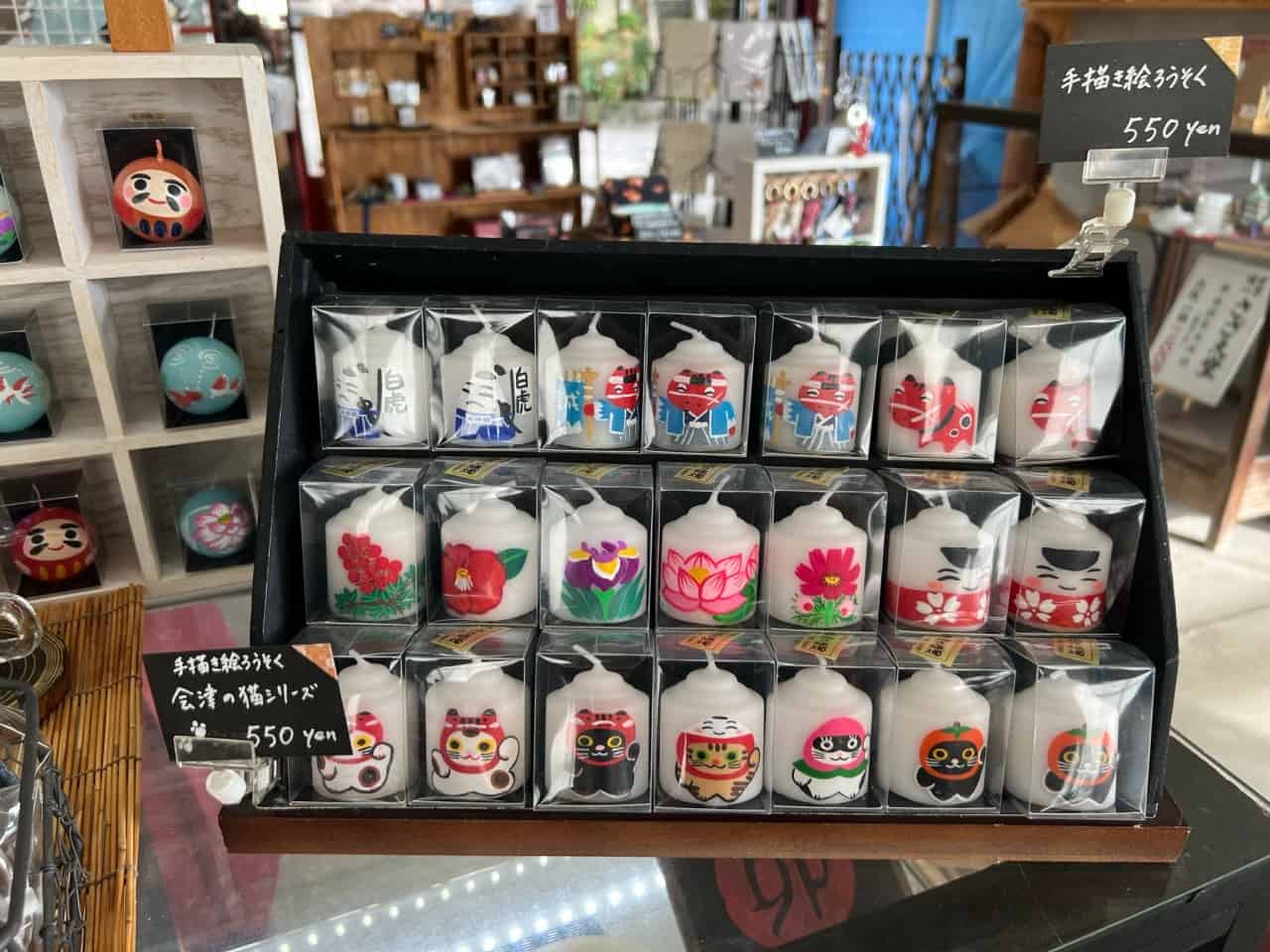
Something that may take you by surprise is the moving walkway built on Mt Iiyama. For a small fee (200 yen), you can take the escalator to the top saving you the trouble of walking up all the steps. At the half way point in case you change your mind, you can also still hop on for just 150 yen!
How to get there
From Aizu-Wakamatsu Station, take the Aizu Loop Bus and get off at “Iimori Yama Shita”.
Wakamatsu Castle (Tsuruga Castle)

Wakamatsu Castle, also known as Tsuruga Castle (website in Japanese), stands as an enduring symbol of resilience and historical significance. Initially, it was built without a castle tower in 1384 and it was called East Kurokawa Castle. Then, between 1591 and 1593, Gamo Ujisato rebuilt this castle with a seven-story tenshu (main keep/castle tower) and renamed it Tsuruga Castle (Tsurugajo) which means Crane Castle. This is due to having white walls with red tile roof that resembles the red-crowned crane. It’s the only castle in Japan with red tiles, which are glazed ceramic tiles to resist the heavy snowfall and frost in the area.

When visiting, we would recommend reserving a tour guide in English as most of the written explanations on each floor is in Japanese. Before you enter an area full of Aizu’s heritage, you can see some magnificent samurai armour, swords, and helmets on the first floor. It’s extremely impressive and you can ponder how many times this sword was used and what it might have been like to have a samurai wearing full armour coming at you in battle!

As you move upwards through the 2nd to 4th floors, there is a timeline showing who controlled the castle over the centuries and you’ll learn about the part that Wakamatsu Castle played at the end of Edo period (1603 – 1868) as well as how it survived almost a month of shelling from Meiji government forces using western artillery from surrounding hills. There is also more to learn about the famous crafts of Aizu, further information on the Byakkotai, and historical figures from Aizu. Finally, you’ll reach the 5th floor, where you can see panoramic views of the city from the Observation Deck which overlooks the beautiful castle gardens.

If you have time, we would recommend visiting Rinkaku Tea House and garden, which can be found at the edge of the castle garden. It was built for the son of Japanese tea ceremony master, Sen no Rikyu, so worth looking into if you are interested in Japanese tea. At Rinkaku Tea House, you can also enjoy matcha and a traditional Japanese sweet for 600 yen while admiring the beautiful garden.
How to get there
From Aizu-Wakamatsu Station, you can walk or cycle to the castle, or take the town bus called ‘Haikara-san’ to Tsurugajo Iriguchi, Tsurugajo Kitaguchi or Tsurugajo Sannomaruguchi bus stop. Town Bus info: here
Ouchi Juku

One of the biggest attraction when visiting Aizu Wakamatsu has to be Ouchi Juku. This former post town is located south of the city in Shimogo Town, and a trip to Ouchi Juku is like stepping back in time to the Edo period (1603 – 1868). The well-preserved post town features thick thatched-roof buildings lining a picturesque street with electricity and telephone wires buried. Strolling through the town, you can admire its charming architecture, indulge in local cuisine, and find plenty of souvenirs and fresh fruit.
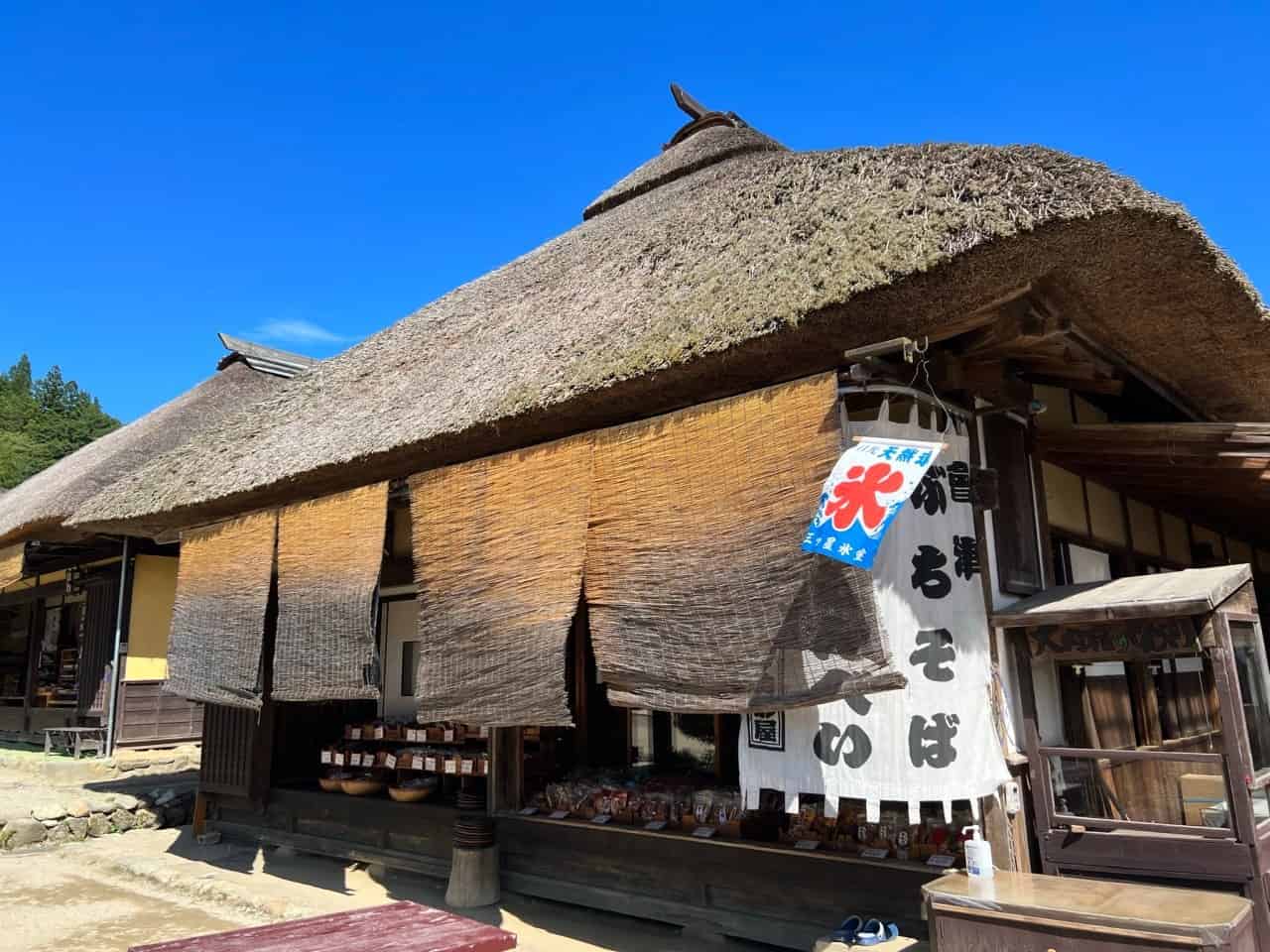
To briefly explain about its history, Ouchi Juku was a post town along the Aizu-Nishi Kaido road which connected the Aizu region with Nikko. In the Edo period (1603 – 1868), feudal lords had to make a trip to Edo (modern day Tokyo) regularly, and from the Tohoku region, Ouchi Juku was one of the stop-off points on their route, where they and their entourage could rest and receive food and accommodation. Today, you can still visit the former Honjin (an inn for feudal lords and high ranked government officials), which is open to the public as a museum showcasing what housing of that time would have been like.

For the incredible view of all the thatched-roof houses lining the main street and the hills beyond, you will need to walk up a set of steep steps to the top where a viewing spot is located, but it’s worthwhile going all the way up. Regardless of the time of year you go, any photos you take here will be stunning, however we imagine the vibrant hues from autumn leaves in late October to November would be particularly breathtaking. On the way back, you’ll discover a more comfortable route down the hill past the money offering box. This could also be a good way up for those not keen on the steps! (Ouchi Juku Map in English: here)

Ouchi Juku is not only about architectural beauty but is also famous for its hospitality and speciality dishes. One which is particularly well-known is their soba noodles with green onion. The traditional way of eating these noodles – which originates from celebrations and weddings – is using the single negi onion stalk to pick up the noodles. If you find this too hard to manage, you will have chopsticks available as well, but we would highly suggest having a go – after a few attempts you get the hang of it!

Our choice for eating this negi soba dish was Tamaya Honke located towards the end of the main street. The building where the restaurant is situated is over 400 years old, and it’s steeped in history with beautifully decorated Fusuma sliding doors and wall scrolls. While waiting for the soba dish, the staff kindly pointed out there was a room upstairs housing some antiques. After climbing the stairs, it was a surprise to see the rich collection of artifacts there – a samurai helmet, Japanese dolls, antique tableware and a selection of vintage cameras. By the time you come down, your meal is ready which you can enjoy while admiring the street view through the gap in the sliding Shoji paper doors.

Other dishes you should try while wandering the main street in Ouchi Juku are the char fish roasted on sticks, Tochimochi rice cakes that combine horse chestnut and mochi and Shingoro, a skewered rice ball flavoured with Miso, Soy Sauce, and Egoma perilla which is grilled over charcoal. In our case, we bought some Tochimichi and Juunen (Egoma perilla) Miso sauce and enjoyed them all.
How to get there
From Aizu-Wakamatsu Station, take the Aizu Railway Aizu Line for 35 – 40 minutes to Yunokami Onsen Station which costs 1,050 yen one way. The country views from this local line train are fantastic and Yunokami Onsen Station has a foot spa which you can use while waiting for your train back! From Yunokami Onsen Station to Ouchi Juku, it’s a 10 to 15-minute taxi ride or you can take a bus called ‘Saruyugo’ which takes about 20 minutes and it’s a reasonable option being 1,100 yen for a return trip, but keep in mind that the last bus back to Yunokami Onsen Station is shortly after 3pm in the afternoon.
Where to eat
The cuisine in Aizu Wakamatsu is famous throughout Japan’s Tohoku region and beyond, gaining a reputation for its “B Gourmet” dishes. Sauce Katsudon, Wappa Meshi, and Kitakata Ramen are just three of the local specialities. In this section, we introduce two of the restaurants we ate at and would highly recommend to anyone visiting.
Tagoto
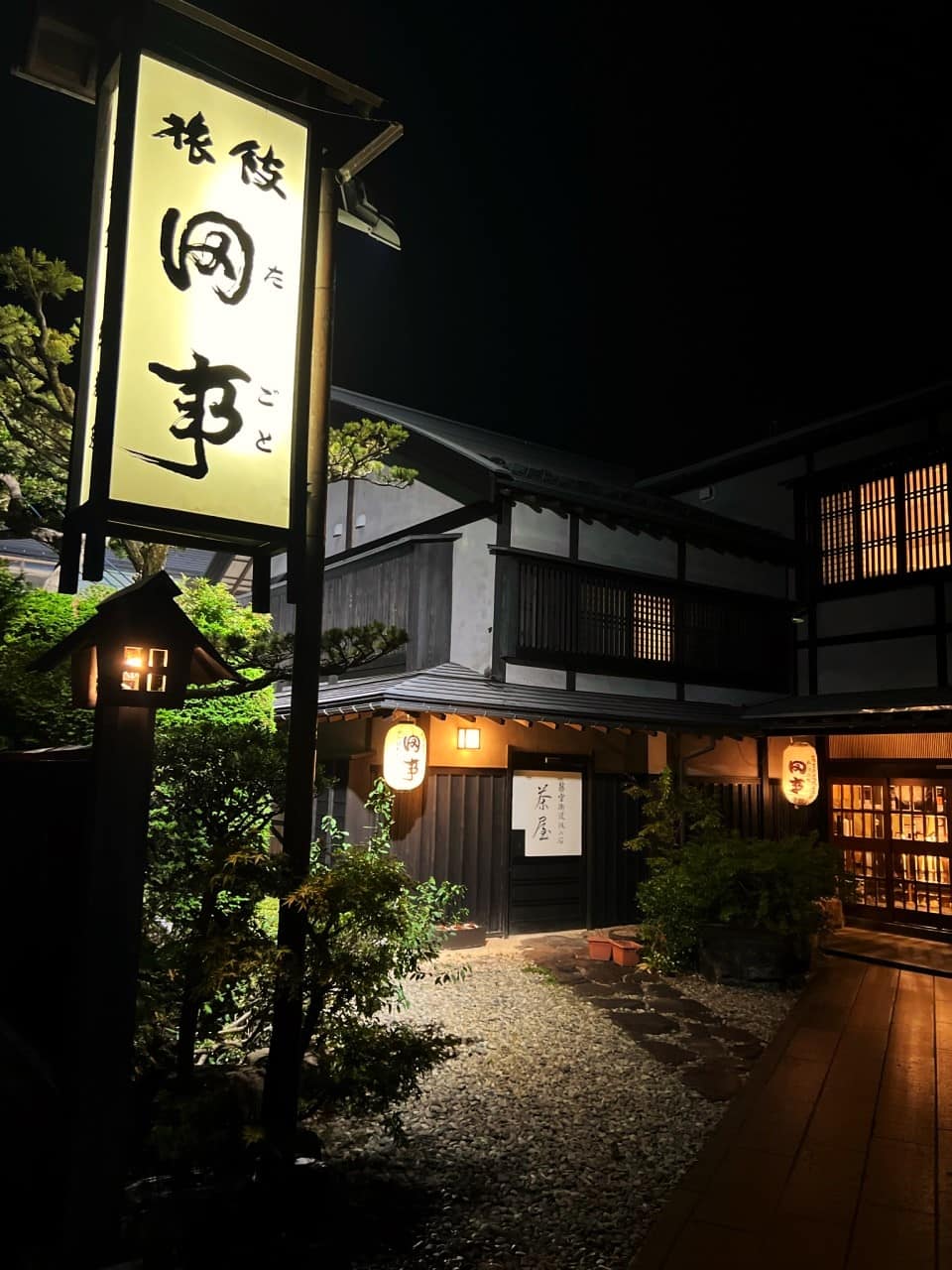
Our first choice for dinner in Aizu Wakamatsu would have to be a restaurant that serves the local speciality of Wappa Meshi. There are quite a few restaurants that serve the dish, but we would recommend Tagoto which is a ryokan and cuisine inn, so you can eat dinner there even if you are not staying as a guest.
Tagoto is a well-established inn just a short distance away from the Nanuka Machi merchant and shopping area. As the Echigo, Yonezawa and Nikko highways all passed by, it’s been well frequented due to its convenient location over the decades. As a reminder of its past, an old “resting stone” where travelers used to sit still remains in front of the inn today.

At Tagoto, you can experience the traditional atmosphere of a Japanese inn room with tatami mats and an irori hearth. Displayed on the walls are Aizu folk craftsware and charming decorations, which complete the ambiance perfectly. Stepping into any of the dining rooms, one can almost feel what the atmosphere must have been like all those years ago. If you are going in summer, rest assured however there is an air conditioner to keep the dining areas cool!

There are several options on the menu for lunch and dinner ranging from Wappa Meshi by itself all the way to course dinners. One thing you may notice on their menu is that they write Meppa Meshi (めっぱめし) instead of Wappa Meshi (わっぱめし). This is because Meppa is an Aizu dialect for Wappa.
As you may guess, I opted for the Aizu Hospitality meal which includes many small dishes placed on a tray around a Wappa Meshi dish in the centre. At the back, one of the small dishes is herring while another is a Tagoto original – Corn Tofu. Kozuyu (the special dish in a vermillion dish on the left) is separate but as it is one of the regional dishes that Aizu is famous for, this could not be missed out! On the right you have a potato in a sweet sauce and miso soup in the bowl behind.
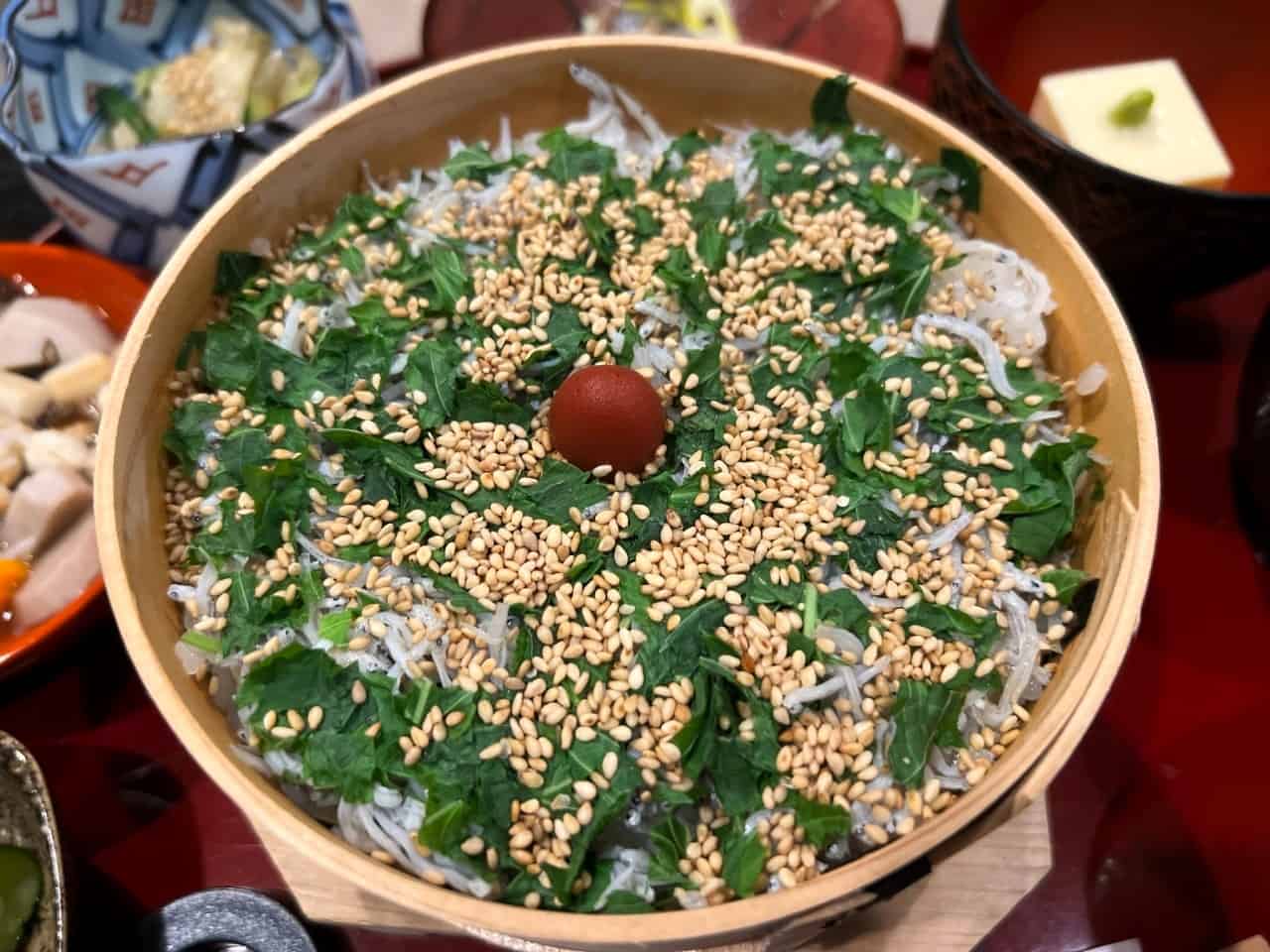
The main dish is of course the Wappa Meshi but what exactly is it? To give a quick explanation, Wappa Meshi is a dish cooked in Wappa or MageWappa, which is a special container made from thin wooden sheets that are curved into a round shape. Inside you have steamed rice topped with a variety of ingredients. These containers could then be taken as a lunchbox by those working in the fields or mountains.
At Tagoto, you can choose from gorgeous cooked Salmon and Salmon roe toppings to vegetarian toppings for your Wappa Meshi. There is also seasonal Wappa Meshi with the Crab topping in winter looking particularly delicious. Above, you can see the typical Wappa Meshi for Aizu Wakamatsu – a Shirasu (small sardines), Ohba (Shiso leaf) and Ume plum topping.
The fragrance from the Ohba leaves mixed with the texture combination from the Shirasu and Sesame seeds make for a delicate yet multi-layered dish, and while it is not as photogenic as the Salmon roe topping, we would definitely recommend getting this Shirasu Wappa Meshi.

Last, here is a photo of another Aizu Wakamatsu’s regional speciality dishes – Kozuyu. This hearty clear soup is made from scallop stock and served in a shallow lacquered dish called a Teshiozara. The ingredients are typically mushrooms, konnyaku, carrots, taro potatoes and Mamefu (small balls of wheat gluten). Kozuyu is often eaten on New Year’s Day, seasonal festivals and weddings or memorials.
It’s certainly a healthy dish full of vegetables and the tasty Mamefu which soak up the broth perfectly. Tagoto’s staff were also kind enough to provide a good explanation of Kozuyu along with Wappa Meshi and each other dish that was served for dinner.
Website: https://www.tagoto-aizu.com ( in Japanese )
Address: 5-15 Johoku-machi, Aizuwakamatsu-shi, Fukushima-ken 965-0043 Japan
Medetaiya

Medetaiya in Aizu Wakamatsu is renowned for its ramen offerings. Here, the Chuka Soba style of ramen reigns supreme. There’s a Shoyu ramen, a mild and spicy Miso ramen, a Shio ramen and even a spicy Negi version to choose from. Every bowl of soup exudes an aromatic broth made with dried sardines, while the noodles are delightfully chewy and medium thick.
To really experience all that Medetaiya has to offer you can opt for their set menu featuring both Chuka Soba and something distinctly regional – Sauce Katsudon which is essentially a rice bowl topped with breaded Pork cutlet covered in sauce. Those who would prefer something smaller can go for the mini-Sauce Katsudon set instead.
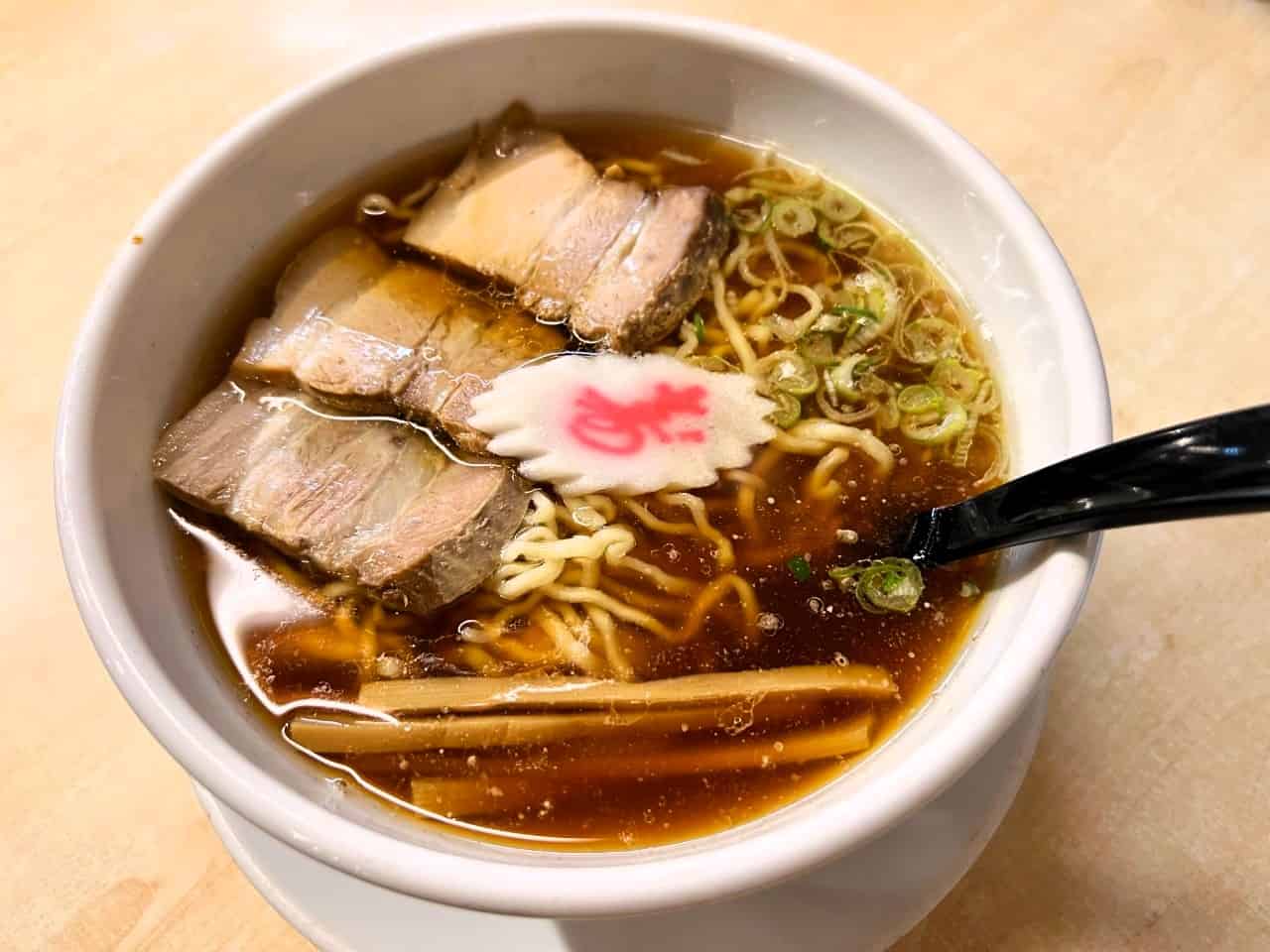
As you might expect, I ordered the Shoyu (Soy Sauce) Chuka Soba which comes with Chashu pork toppings, a slice of Kamaboko (steamed traditional fish cake), Negi, and Menma bamboo shoots. You get a huge heart warming hug when you first taste the rich broth made from dried sardines, kelp, and local vegetables slowly cooked with water from the Aizu region. The thick generous slices of Chashu pork are also incredible, having being simmered for several hours using soy sauce from a local brewery.

An equally important component of ramen is its noodles, and Medetaiya’s provide a delightful chewiness that perfectly complements its broth. These wavy, medium thick noodles pick up the broth perfectly, and I was genuinely looking around to see if we could order extra noodles. Something that shouldn’t be overlooked were the Menma bamboo shoot toppings. These are crunchy and are cut considerably thinner compared to your average ramen topping and provided some texture variety.
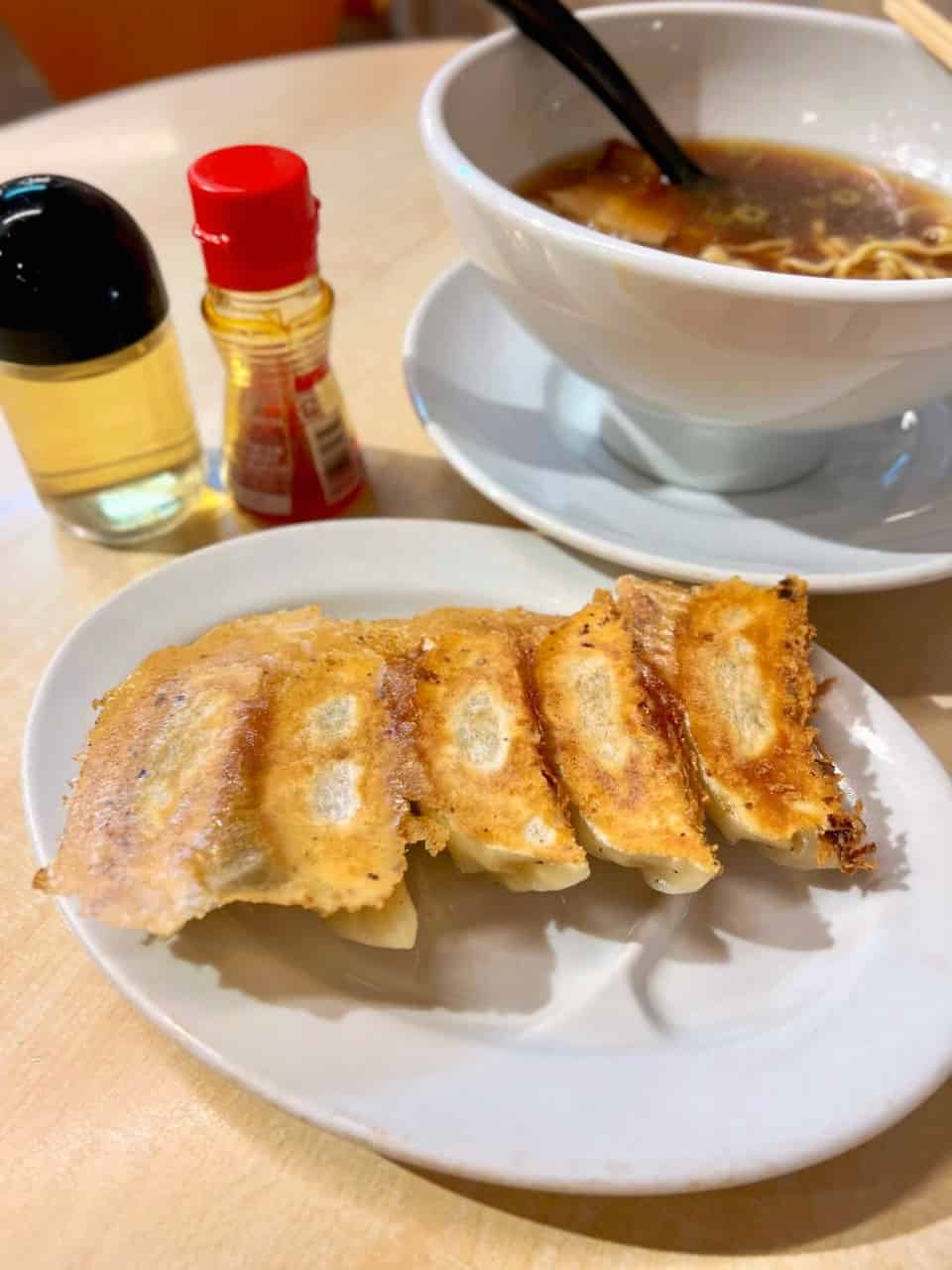
Although Sauce Katsu ricebowls or mini ricebowls are the suggested set route, it was the Gyoza that caught my eye. Medetaiya makes theirs in-house and this includes the gyoza dumpling skins. Unsurprisingly, the result is superb plump gyoza with crispy skins bursting full of fillings. They are also an excellent match with the vinegar and La-yu chili oil.

As Medetaiya gets full during lunch and at dinner – I came in right before closing – the restaurant has a considerable amount of sitting. So unlike some other ramen shops, you get a certain amount of space and time to pick your order using the tablet screen. Other original items on the menu that may intrigue you are the Aizu Champon Noodles, the Clams “Vongole” Ramen, and a curry Yakisoba!
Two things to know about Medetaiya before going. First – regular days off are Tuesdays and second is that it currently closes early at 7pm on weekdays and 8pm on weekends, so be sure to carefully time your visit (and appetite) before you go.
Website: https://www.medetaiya.co.jp ( in Japanese )
Tripadvisor: Medetaiya in Aizu Wakamatsu
Address: 3-1 Sengoku-machi, Aizuwakamatsu-shi, Fukushima-ken 965-0817 Japan
Where to stay in Aizu Wakamatsu
There is a good choice of hotel and ryokan accommodation in Aizu Wakamatsu. Where you stay will depend on your budget, whether you want to eat at the accommodation and if you are looking for a Japanese style ryokan inn or a Western style hotel. We stayed at the Washington Hotel, and you can read our honest impressions below.
Washington Hotel
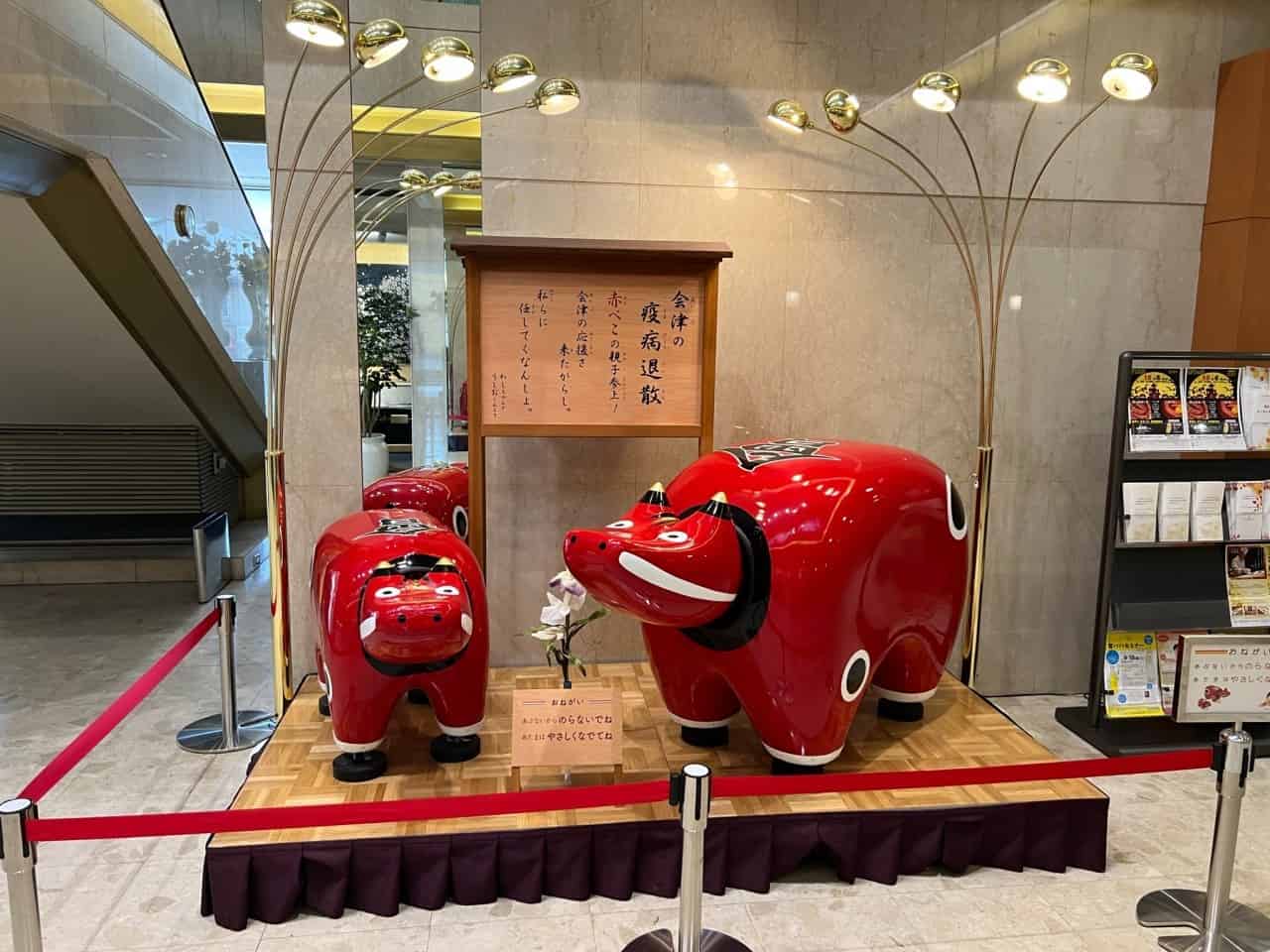
Aizu Wakamatsu Washington Hotel is a great place to stay for visitors wishing to explore the local area. Situated just five minutes away from JR Aizu Wakamatsu Station, you have convenient access to early morning trains or highway buses connecting you with your next destination.
Riding the Aizu Railroad from Aizu Wakamatsu station is also an ideal option for a half day trip to Ouchi Juku or Kitakata city. Within a few minutes walk of the hotel, you have numerous bus routes and the city loop bus that can take you to all the major sightseeing spots. For those who prefer walking, you can make it on foot to Nanuka Machi or Mount Iimori in under 25 minutes.
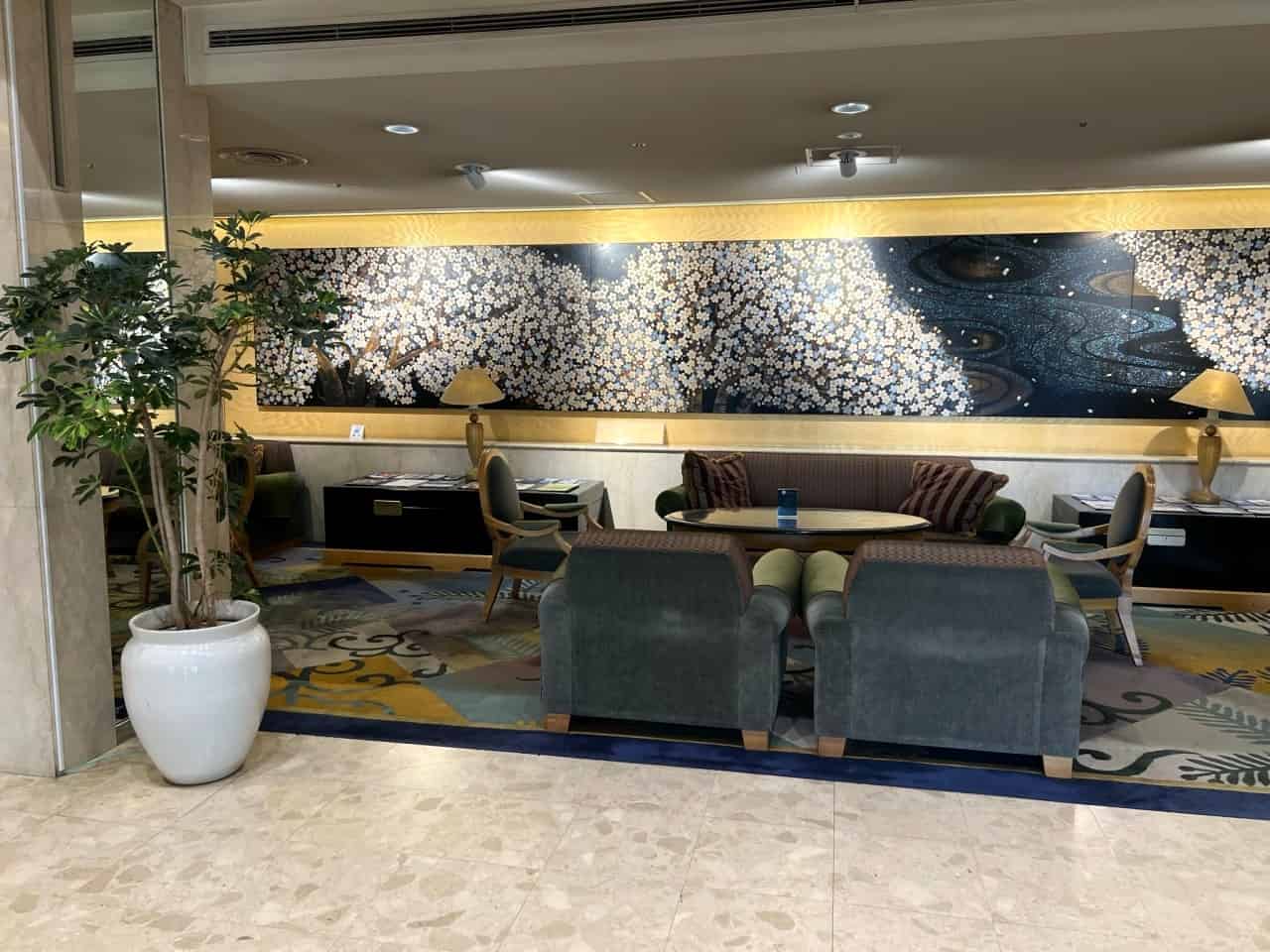
The hotel itself is a 3-star hotel that caters to both business travellers and guests on holiday. The lobby area next to the reception has a large display of the local Aka Beko cows of Aizu Wakamatsu and a comfortable seating area.

When it comes to the hotel rooms themselves, they are practical and while the interior decor is dated, they are clean and tidy. The room itself has everything you need with a TV, small fridge, kettle, complimentary tea, strong wifi, and plenty of sockets for charging your phone and devices. I chose the smoking double as there was a great discount available, but of course there are plenty of non-smoking rooms in the hotel. Perhaps most importantly, the bed was comfortable allowing you a pleasant night’s sleep ready for the next day’s sightseeing!

The bathroom is compact but clean with a deep bath and all the toiletries you need for your stay. Like the room the interior decor is old but kept in good condition, and you have plenty of fresh hand and body towels each day.
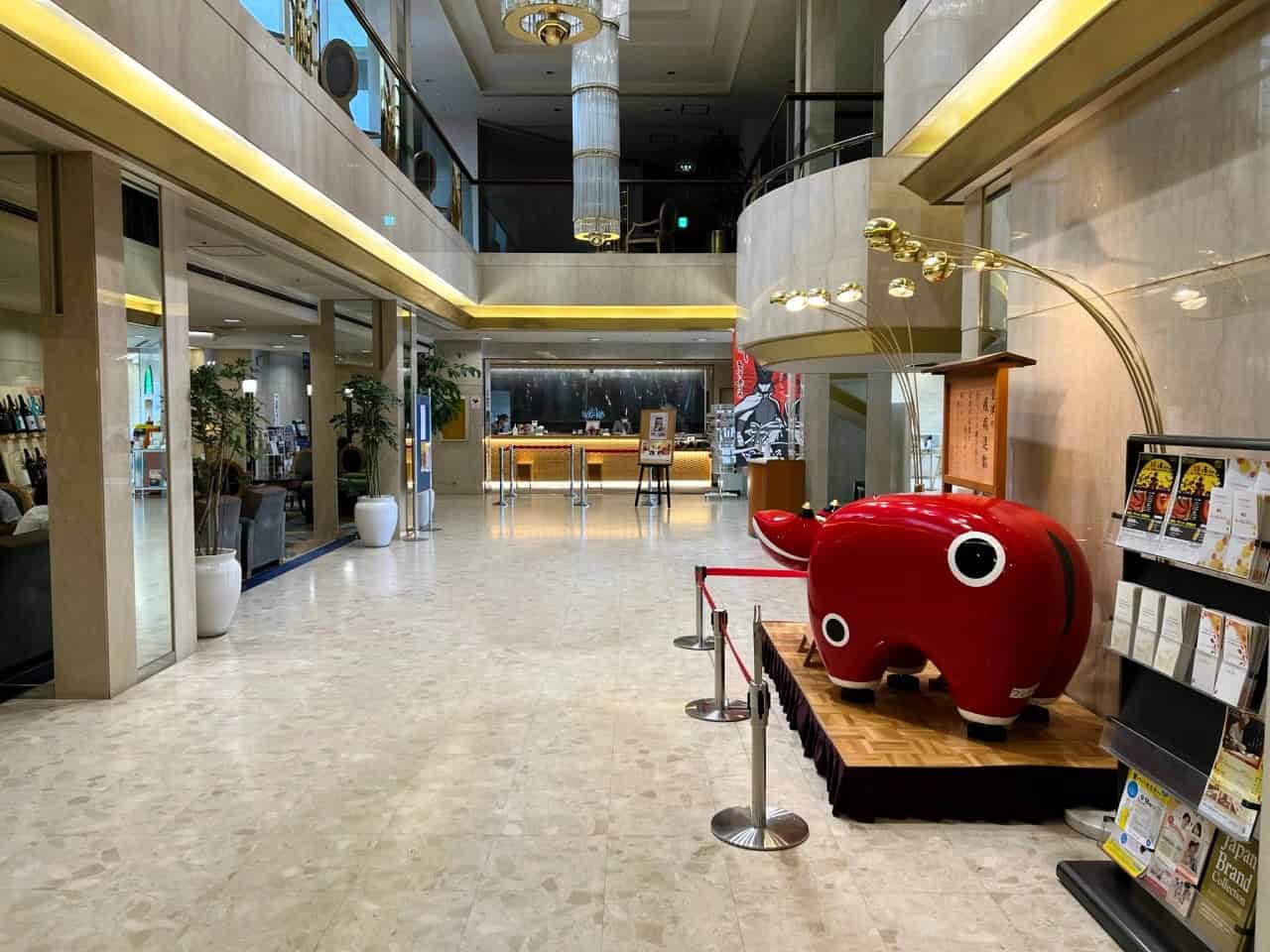
There are two restaurants at the Washington Hotel – the steak and bar Gaslight on the 10th floor which provides an excellent view of the streets of Aizu Wakamatsu below. Then for a unique taste of Aizu, there is Sanjusangendo on the first floor. Here you can enjoy hot-pots that change with each season as well as a local sake selection. Near the hotel there are also all types of Japanese restaurants, and across the street you have a 7-11 convenience store if you want a quick snack, bento lunch box or an onigiri riceball.
Website: https://washington-hotels.jp/aizuwakamatsu
Address: 201 Byakko-machi, Aizuwakamatsu-shi, Fukushima-ken 965-0024 Japan (Location: How to get there)
Other things to do in Aizu Wakamatsu
Aizu Wakamatsu has even more places to visit and things to do. In the near future, we will be providing more information on the Aizu Wakamatsu sightseeing spots such as the Nisshinkan which was an Edo Period Samurai School where you can now take part in archery and meditation classes. Also, noteworthy is Oyakuen, a traditional landscape garden, along with the therapeutic hot springs of Higashiyama Onsen.
Travelling to Aizu Wakamatsu
There are several ways to get to Aizu Wakamatsu. The quickest way is to take the JR Tohoku Shinkansen to Koriyama Station from Tokyo Station, and then at Koriyama Station transfer to a local train on the JR Banetsu saisen (Banetsu West Line). From Tokyo, it will take you over 3 hours to get to Aizu Wakamatsu, costs approximately 9,500 yen, and both train journeys are covered by the JR Pass. If you are travelling around lunchtime, we would recommend trying out a restaurant in the station such as the Tonkatsu restaurant we went to called Wako Tonkatsu.
Another route to Aizu Wakamatsu, especially if you are already visiting Nikko, would be to take the Tobu Line Limited Express to Aizu Tajima, and enjoy the scenic views on the local Aizu Tetsudo line that runs through the countryside to Aizu Wakamatsu. On the way, you’ll pass wooden station buildings, valleys with ricefields and see a variety of rural landscapes. The journey from Tobu Nikko Station to Aizu Wakamatsu Station costs about 5,000 yen although please note it is not covered by the JR Pass.
A useful resource for travelling by train in the Aizu Wakamatsu area or in fact around Japan is TS Japan Rail’s website. They introduce the JR Joetsu Line, JR Tadami line and the Aizu Tetsudo here, where you can see some of the photos of the trains and beautiful scenery in the area. TS Japan Rail also can provide customised travel ideas and help you plan out the travel part of your Japan trip.
In summary, if you are searching for an unforgettable travel experience, then look no further than Aizu Wakamatsu! As you’ve seen, the city and surrounding area boasts a harmonious mix of history, culture and natural beauty. From visiting the historical castle and ancient temples to savoring local delicacies and immersing oneself in traditional customs, your journey here promises intriguing discoveries!
Note: All the information and details are correct at the time of publishing. The fares and prices mentioned in the article are at the time of the trip in September 2023. We would recommend checking each hotel, store, or other relevant website for the latest information.
For those searching for more information on travel in Japan, please feel free to take a look at our The 20 Best Japan Food Tours, 35 things to do in Nagoya city, or When is the best time to visit Japan and more in our Best Japanese Travel section.
Finally if you are looking for more travel tips and travel discounts for your upcoming Japan trip, please subscribe to our Japan Travel newsletter using the widget below.



1 comment
[…] do in and around Aizu Wakamatsu, we highly recommend this article from “Best-Japanese” BEST THINGS TO DO IN AIZU WAKAMATSU(Click on […]
Comments are closed.